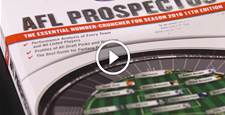Find out where your team will finish this year in our annual crystal-ball gaze.
The 2015 season will feature genuine contenders, a title up for grabs and fascinating mid-table tussles as good sides crowd the doorway. Bottom-feeders will bring down leviathans without surprise. Let’s hope the numbers turn up to appreciate it. The drop in attendance and general opinion, according to various Melbourne vox pops, is vaguely disturbing. Not all fans are turning away, but many seem dissatisfied. Much of it’s about pricing, but there’s also the matter of value.
Some changes have been for the better. Many believe limited free-agency is. Others continue to taint footy’s essence. Corporate and legal influences always threaten to penetrate too far, and people are finding themselves a little more irritated without knowing why. Maybe commentary like this sample, from ten minutes’ listening, provides one clue:
“He’s been playing well tonight. If you drink and drive you’re a bloody idiot.”
“Ablett’s already had 12 Aussie disposals.”
“Sydney up by three points. If you drive on drugs you’re out of your mind.”
“Here’s Robbo thanks to Karcher: Crameri coming off with a leg problem?”
“Grundy’s been Subway subbed out. Now we’ve had three Subway subs.”
“Pendlebury’s had 11 Carlton Draughts.” (Apparently now a generic term for a statistic).
That’s just commentary. Let’s talk welfare. It’s turning the game into a lumbering steampunk contraption with all sorts of absurd attachments, including indecipherable and heavy-handed penalties for indefinable offences, rules governing physical contact that ensure even the innocent are found guilty at least once in their life, and an interchange system that guarantees players perform at peak efficiency and skill for most of a match, making the game more boring for it.
Those who argue that scheduling and fixtures are the answer to declining interest are deflectors, brand protectors, who never brook criticism of the actual product – sorry, game. What they don’t understand is that people flock to the footy in the hope of getting away from the mind-numbing repetitions of modern life. It’s time someone who matters saw the overuse of interchange for what it is. It’s a pack of fresh-legged pachyderms all occupying the same room, and the AFL’s legally encumbered establishment keeps ignoring them. Apparently we go to games not to see footballers in action, but health and safety, duty of care, equality, tolerance, a fair day’s pay; snuggy, well-fed and well-off players swaddled in their legally compliant game.
The AFL Players' Association, charged only with every aspect of player welfare, wants no limits to interchange and argues that exciting midfielders like Dane Swan would be less effective, and more injured, if it were reduced – an insult to Swan. Good footballers find a way.
No one will be deriving incomes from live attendance the way things are going, and television will follow.
Interchange has become not so much a blight on the game as a game changer. You can alter fan appetites piecemeal, but as soon as you try to sneak an entirely different meal in front of them from the one they ordered, they might decide your establishment is no longer worth patronising. Let’s hope the interchange cap of 120, locked in for two seasons from the start of 2014, doesn’t inflate. Even now, it has provisions for substitutes and injured players that effectively take the number to a possible 133. Players swapped at quarter-time breaks and substitutions aren’t counted in the base figure. Outside the cap, three injured players can be replaced in the dying minutes to ensure teams never finish with fewer than 18.
This recognises that player livelihoods are affected by injury and careers shortened by a surfeit of grinding football in lengthening seasons. Let’s not deny its revenge effect, though. It’s probably a good reason crowds are down. There’s a feeling, even among those who faithfully buy memberships and pass on the mores of fanhood to the next generation, that they’re not watching the same game. Many want rotations drastically cut. This isn’t a simple clash of “progressives” and “conservatives”.
How many original features can a game lose until it’s not the same game?
The one-on-one matchup was once important for a reason. After match results were forgotten, people would delight for decades to tales of bouts between Knights and Van der Haar, Biffin and McKenna, Doull and Blight, Thompson and Nicholls, Fletcher and Greig, Flower and Schimmelbusch, Dempsey and Moore, Southby and Hudson. Within a game, there was a card of exciting prelims, all happening at once. These match-ups were a matchless feature of the game those fans used to watch; sub-plots contributing to the larger story, yet having their own resolve. It was brilliant … Today, we’d be hard-pressed, as they swarm from one end to the other, to remember who’s matched with whom, even in key positions. Even those contests are diluted as key players are surrounded by two or three fresh-legged opponents.
Tactical elements sacrificed to modern developments are also missed by fans. If a player snuck, Sheedy-like, from his position, it was strategic, not compulsory. Escaping unnoticed took a different skillset. As interchange increased, bevies of runners allowed for possibilities such as flooding. Hand-to-hand combat was excised. The goal-to-goal depiction of a team, three abreast from backline to forward line, plus followers (ruck, ruck-rover and rover) no longer applied. Unlike changes to other sports, which operate within more rigid arrangements, AFL’s changes have been structural, modal, dynamic, physical. That galloping, ever-proliferating creature is on the field for seven-minute stretches before he’s rotated. He doesn’t return to an opponent, he returns to a bench to recover.
Fans are numbed at the sight of them running on and off, but compelled to know player movements. A non-spectacle commands their attention, rather than core business. It’s like the sinking sensation business owners get at the thought of spending a fifth of their time on tax and associated administrivia. Two fallacies seem responsible: first, that fans want the game increasingly faster. They don’t. They want it more exciting. Second, that fans want player safety. Fans are not unreasonable. Most are happy that the sniper and the shirtfront have gone the way of the pterodactyl. No one ever wants injury. But the possibility of injury – that’s another matter.
The AFL has narrowed its game to tenets of skill, speed and endurance, and disinfected it of the risk of injury and fatigue. As a result, they’ve altered their contract with the fan. Compare the extraordinary vision of Wally Lewis and Darren Lockyer. They’re not opposed to dividing rugby league into four quarters and increasing it to 100 minutes, provided it doesn’t usher in a different type of player. To ensure smaller playmakers remain that way, they recommend interchange restraint. They’re smart enough to understand the nexus between body type and the way a game is played. The effects of interchange gone mad are as profound as those for basketball if the hoop was lowered a metre.
They rightly point out that a proliferation of running, explosive big men would dumb the game down, rob it of variety. The elimination of the all-important fatigue factor would constitute a profound alteration to the code, from its spirit to the way it’s executed.
To what extent has the advent of the powerful, mistake-free, one-touch, all-running, perpetual motion player made AFL football unthinkingly repetitious?
Physical contact has already been minimised, wet grounds practically eliminated. Wind is rarely a factor. Fatigue is the last accidental element; the final out-clause for imperfection. Once the roll of the dice, the impulsive dash, the dying strain of the last fibre have been dispensed with, then the great moments of the sport will never be repeated. It was fatigue that allowed those astonishing big-man gallops from Wiedeman, Madden and Manassa. It was fatigue, and its overcoming, that allowed for Twiggy’s last-minute mark to draw the ’77 grand final; for the possibility of Essendon’s incredible final-quarter engulfing of Hawthorn in 1984. Harmes in ’79. Barry in ’05, Varcoe in 2011.
After the Phil Hughes catastrophe, fast bowlers never entertained the possibility of eliminating bumpers. The boxing fan who never wants to see a man badly hurt still requires at least the chance of the knockout. They’d be thrilled to see their man win on points, but not if that was the only possible finishing scenario. Sport occupies another realm entirely when it sends out little intimations of danger; an exhilarating realm.
The great finishes weren’t shoot-outs involving 36 fit blokes whose collective exhalations wouldn’t extinguish a candle. Rather, they were desperate men flinging themselves frenziedly; the despair and triumph of last-minute loss and victory; the cruelty of chance; making the most of almost nothing.
Elements of the game consigned to its past should become part of its future, if the AFL is serious about its spectator value.
Just sayin’ ... Here's how they'll finish in 2015.
1 - SYDNEY
The Swans have greater margin for improvement than anyone. It’s a matter of whether they fill it. Though their back six is still not optimal in their defensive role, their defensive pressure around the ground is second-to-none. Malceski’s departure is a big defensive hole, and there are some ageing bodies. But generally, thanks to their overall set-up, they concede fewer marks inside the 50 than anyone else. Up front, with McVeigh, Jack, Tippett and Franklin, they have a flexible and powerful set-up. It remains to be seen whether Goodes will be a liability; an ageing superstar who stays too long can profoundly affect set-up and dynamic. The Swans’ ability to stifle opposition at stoppages, curtail kick-ins and force them to hurry into their 50 was missing in the grand final. That won’t happen again. It should be remembered that last season Sydney cranked up to its current level slowly and was beaten up in close by several opponents before becoming the benchmark. They should begin this year with those problems ironed out.
2 - HAWTHORN
They vie with Geelong for the title of best side of the last decade. They have magnificent personnel and a perfect blend of leadership, dash and hardness. The Hawks were devastatingly effective in 2014 at getting the ball into their forward 50 to targets who were in a good position to score, via the delivery of men like Bradley Hill, Isaac Smith, Jordan Lewis and Liam Shiels, and the job was completed by the increasingly dominant Roughead, competently assisted by Gunston. Their defence has been bolstered by swinging backman James Frawley and the excellent Jono O’Rourke is a great get with an eye to the immediate future. Their best players, like Hodge and Mitchell, were at their best last season, and the next level stepped up. Jordan Lewis was sensational in the grand final, and Rioli came back redoubtable, just in time to be a triple premiership player. They’re in their pomp, they’re one drilled and skilled unit, and they’ll play Sydney again to continue one of footy’s great modern rivalries.
3 - PORT ADELAIDE
They can go one step further. Their rise last year was stunning, and now they have Paddy Ryder who, if fit, might be just what they need. They sacrificed a first-round pick for him, so he needs to be. Let’s hope his erratic chart will even out under Hinkley. Their forward line is supplied by one of the best midfields going around. They had plenty of opportunity in their front 50 last season – more than anyone else, in fact. The boiler room has Boak in career-best form. Wingard, Ebert, White, Gray, Wines and Polec, combined, looked a little inexperienced at the start of last season. They proved ready to go. That forbidding midfield was fed by Big Lobbe in the ruck, a real surprise package. They have recruited two tough coaching hombres, Hocking and Laidley, to support the hard Hinkley, and a theme is emerging. Expect mean – and we mean mean! These blokes have already emerged as clearance masters; they’ve made important changes, and they’ll be doing very well.
4 - ADELAIDE
A dark horse. Certainly final-eight material. Sam Jacobs is part of the ruck renaissance, and, like Port’s Lobbe, had a lot to do with their midfield effectiveness. Thompson, Dangerfield and Sloane are a big reason for their effectiveness around contests. They’ve added much-needed height, in defence and up front, and Jake Lever is a great defence acquisition. We mentioned the potential of Adelaide’s forward line last season. Podsiadly, Betts, Walker, Jenkins and Lynch will be match-winners on all cylinders. They have marking power around forward contests, and on the ground, either in goal assists or opportunistic scoring, Betts adds serious potency. The Crows’ big strength is scoring spread. Any number of midfielders keep the board ticking. Small lefty Harrison Wigg is another good defence/midfield get. They’re considered to be in a rebuilding phase, and they have a brand-new coach, Phil Walsh, who actually believes in drastically reducing interchange, unlike his predecessor, Sanderson, who wanted it unlimited. This will make Walsh’s coaching interesting. This is a shock selection for the four, but ... well, you’ve got to have at least one of those.
5 - GEELONG
We still can’t dismiss them. We’ve written before that they might’ve fallen as far as they’re likely to fall, and it’s proven true. They were a force last year, and it’s not as though they’re battling with ageing warhorses. They’ve replaced departed champions seamlessly, and still benefit from the efforts of the old ex-firm of Thompson, football manager Balme, and president Costa. The old “Geelong Highway”, that incredibly quick passage from clearance to goal, still dazzles. They have players to execute, and soldiers to get it. Recruit Nakia Cockatoo is tall, an exciting runner, and may see senior footy this year. Hawkins is a powerful force, ably backed up-front by the smartest, toughest ball-winners around, like Selwood and Bartel. But they might need to make hay. Hawkins is eligible for trade under the limited free-trade agreement. That would greatly weaken their forward structure. Otherwise, they still win enough important stats to suggest they might bounce just a little higher.
6 - FREMANTLE
Coach Ross Lyon’s philosophy of the primacy of all-over defence and relentless pressure has been proven. As a season wears on, the Dockers rise. They get turnovers and are effective at scoring from them. Their ability to generate momentum in the midfield and convert it into a maximum by quickly getting it up forward before opposition defensive set-ups can be established is daunting. It gives their impressive forward structure (yes, Pavlich is backing up) all the time in the world to score. They probably need height up front, and didn’t get it in the draft, but they’ve acquired a very good midfielder, Lachie Weller. Fyfe is, of course, a gun and will continue to be so. Key personnel who missed the finals last year, in Ballantyne, McPharlin and Johnson, are fit. One glaring problem they’ll need to address is their accuracy on goal. They dropped out of last year’s finals after kicking 11.17 against Port in a match they should’ve won. They also have an ageing list, and didn’t do a whole lot about it in the off-season. Lyon’s roster management is yet to be tested. They do have a rather cruel start to the season, but as the coach says, they’re a “no excuses” club. Their 2015 performance will be a test of character for Lyon, as doubts still linger about the way he left St Kilda and took the Fremantle job. If they fail, and key personnel retire, does he have the fibre to stick with them and rebuild?
7 - NORTH MELBOURNE
A couple of finals wins last year gave the ’Roos belief. Harvey is motivated by the go-getters around him, and still matches, or surpasses, most for skills and speed. The side lifted its fitness levels noticeably last season, and was better defensively. They displayed the sort of top-five team defence that wins titles, especially in the forward 50, which is why they upset top sides. Despite drastic dips in their scoring chart, probably as a result of focus on match-winning defence, putting the two together is possible for this unit, as they were able to covert inside-50 opportunities better than anyone. They’ve bolstered their defensive stocks further by drafting a few solid talls. The addition of Waite and Shaun Higgins should add some forward mettle and goal-kicking power. Levi Greenwood to Collingwood is a midfield loss, as he was instrumental in last year’s resurgence. Their problem might be momentum. It will certainly be halted next season if their players up for trade decide to go, under free agency. One of those players is their captain, Andrew Swallow.
8 - RICHMOND
Fourteen games at the MCG and a number of blockbusters should suit the Tigers on a number of levels. They need the energy and aggro of big Ivan Maric. In the second half of last season, the Tigers got their legs back and won nine on the trot, and it had much to do with the return of Maric, as well as the late addition of former GWS midfielder Anthony Miles. Suddenly, the prolific Cotchin wasn’t playing a lone hand getting clearances. Miles halved Cotchin’s workload, and Cotchin was better for it. Deledio, Martin and Edwards are experts at finishing, and intend to get plenty of supply this year. Ty Vickery missed half of last season, and he’s vital to their chances. They’re impossible to anticipate, but definitely final-eight material.
9 - COLLINGWOOD
Before last year’s collapse, the Magpies’ strength was defensive pressure. They still need to work on that frustrating tendency to miss set shots – it’s doubtful Cloke will get better – even though their ability to score on the run is, at times, electrifying. Elliott and Blair, in particular, have stood up in that area. Cloke should get more support this year from the talented Jesse White, whose first season was unremarkable. Beams leaves a midfield hole, but the old firm of Pendlebury and Swan remains, boosted by tough half-forward/defender/midfielder Jordan De Goey, who might step straight into the seniors. They also now have two very good midfield additions in Travis Varcoe and Greenwood, from Geelong and North respectively. Swan has promised he’ll fare better after last season’s woeful effort. We know Pendlebury will be absolutely ready; he’s never anything else. Pendles entered new dimensions of defensive and second-effort last season. They’ll hover around the eight, and might even get in. If they do, the ’Pies are hard to predict. They might cause mayhem, they might fold meekly.
10 - CARLTON
They have scintillating runners, led by Chris Yarran, and a midfield that controls stoppages. But they need more. They picked up another powerful run-and-carry player in Blaine Boekhorst. Judd, Gibbs, Murphy, Everitt, Simpson and Thomas ensure they have no shortage of speed, smarts and run. Questions revolve around robustness and consistency. They’ve fortified their backs and forwards with Clem Smith and Jayden Foster respectively. Daniel Menzel, solid and goal-smart, is a boon to them up front, but Levi Casboult needs to straighten his goal-kicking technique. The loss of Waite was a double-edged sword, but the sort of experience he brought can be covered. Similarly, the departures of Garlett and Robinson. They really do need a little more leg speed around the middle. Malthouse can only hope his Collingwood fave, Dale Thomas, regains his form.
11 - WEST COAST
Are they flat-track bullies or the real thing? They spend more time in their forward half than anyone, but lost the big ones against teams above them. Cox and Glass are both retired, and that’s a setback. Still, with a centre consisting of reigning Brownlow medallist Matt Priddis and the elastic ruck work of Naitanui – if he forgets a forgettable 2014 – they’ll be contenders. Hopefully they’ll have the fast and smart Josh Hill on board for the entire season. Certainly, the trampoline effect of their centreline and the presence up front of Darling and Kennedy forces teams to be a little hesitant in attack. Notable lapses in accuracy cost them a finals spot, but overall, they were formidably accurate. They require more midfield depth to take pressure off a slimming list of champions. They might just scrape into the finals.
12 - BRISBANE LIONS
Coach Leppitsch’s approach has been strikingly different. The Lions became distinguished by their method of running it up the centre and kicking, often accurately, once inside their 50. It worked enough to suggest they should persist. Jonathan Brown leaves the biggest hole of all. He was their heart and soul. Dayne Beams and Allen Christensen will add grunt, and tough guy Mitch Robinson gives them the kamikaze factor – we’ll see what that’s worth. Through the academy system they picked up rebounding defender Liam Dawson and tall Harris Andrews. It’s up to Leppa to turn latent into talent.
13 - GOLD COAST
The Suns have modelled their game after the Ablett-led early blitzkrieg that was so successful when he was at Geelong. It’s hard to say whether coach Eade will continue that line, but it was working. Ablett is looking a million dollars – as he should – right now, and is fully recovered from last year’s shoulder dislocation. He’s supported by belligerent David Swallow, and the tough and persistent Prestia and O’Meara. Ex-Hawk Mitch Hallahan will only benefit a team with this approach. They are becoming strikingly good at gaining the hard ball, and their intensive midfield efforts are beginning to fan out to other aspects of their game. They’ve recruited a good mix of talls and runners. Jarrod Garlett fills the latter role, and lanky red-headed ruckman Peter Wright will be a beauty when his body matures.
14 - GREATER WESTERN SYDNEY
The Giants are beginning to master the basic hard-labour that makes for a great team. They tackle hard and their contested possession count is up there with the best. Tackle counts will equal wins, and they’re getting there. They have a couple of indigenous recruits that might make an early impact: Paul Ahern and Jarrod Pickett. And great prospect Pat McKenna is another addition to their slowly accumulating wealth of talent. And let’s not forget the arrival of an elite player and leader in Ryan Griffen, from the Bulldogs. As for Scully, they must be thanking their lucky stars Western Bulldogs gave them a chance to recoup some quids. Hopefully, he’ll live up to his obvious potential someday soon. They might shock even more teams this year.
15 - WESTERN BULLDOGS
McCartney did a great job in 2014, improving aspects of their game like effective disposals and contested possessions. Yes, the only statistic that matters is the scoreboard, but those stats are important. We hope Luke Beveridge can build on McCartney’s efforts. Macrae is a midfield star, and Liberatore and Dahlhaus are champions whose experience should lift them. The emergence of the tall, running, talented Marcus Bontempelli was exciting; what a star he is already. They have great ground-level ball-getters. They’ve recruited big defenders, notably Zaine Cordy and Joel Hamling. But their forward focus is telling. They’ve picked flexible midfield/forward options. Tom Boyd is either the most overpaid, over-hyped recruit of all time, or a stroke of genius. What a strange off-season they had: coach sacked, the captain begging to leave, eventually replaced by Boyd. The Bullies have gone all-in. They’re expecting a big season, not in five years’ time, but now. They have gaps and a new coach, so it’s a gamble.
16 - ESSENDON
It’s hard to recall how the Bombers played last season, or anticipate how they’ll play this year. They have some very good personnel. Thompson had them possessing and disposing with magnificent efficiency, and we were all hoping they’d win for his sake. Sometimes they held possession too long and took the safe option, but they’ve proved very good at sweeping upfield, from their rebounding backline through to the centre. Let’s hope Hird can capitalise without his mentor. Cooney is a good acquisition if fit, and a waste of time and money if not; his knees are no more reliable than they were at the Bulldogs. Nick Kommer returns after injury and is quick and exciting. Zaharakis is not quick, but bloody good. Joe Daniher is one elite big man. Jayden Laverde, a very good, tall, athletic midfielder, has been added. Despite the loss of Ryder, they have Bellchambers returning in the ruck, supported by Giles. Depending on the ASADA fallout, they could fall anywhere from championship challenger to cellar-dweller.
17 - MELBOURNE
Paul Roos has a long way to go. The only reason certain stats, such as disposal efficiency, are competitive at all is the lone efforts of men like Watts. Their defensive pressure has increased marginally, but uncontested marks stats suggest focus on targets undamaging to opposition. As their defence improves, they’ll become more penetrating. What they have done is add much-needed skill and speed to their burgeoning midfield. They also have a good future tall defender, Oscar McDonald, brother of Melbourne’s Tom. Fans need patience as they build the personnel to fulfil Roos’ plans.
18 - ST KILDA
Riewoldt, their forward-line colossus, plays like the premiership-hungry bloke of a decade ago. He scored 49 goals last season with one of the best conversion rates in the game. But routes to goal have dried up; not many other Saints even reached double-figures. Coach Richardson has an enormous job. The Saints made wise draft selections, especially no.1 pick Paddy McCartin. Whether he makes the sort of immediate impact or gets the same opportunities as past top picks for Saints remains to be seen. They need to bounce back, but to do that they’ll need to first make contact with the bottom.
- Robert Drane
Related Articles

Feature Story: Moving the Needle

The Aussies at The Open



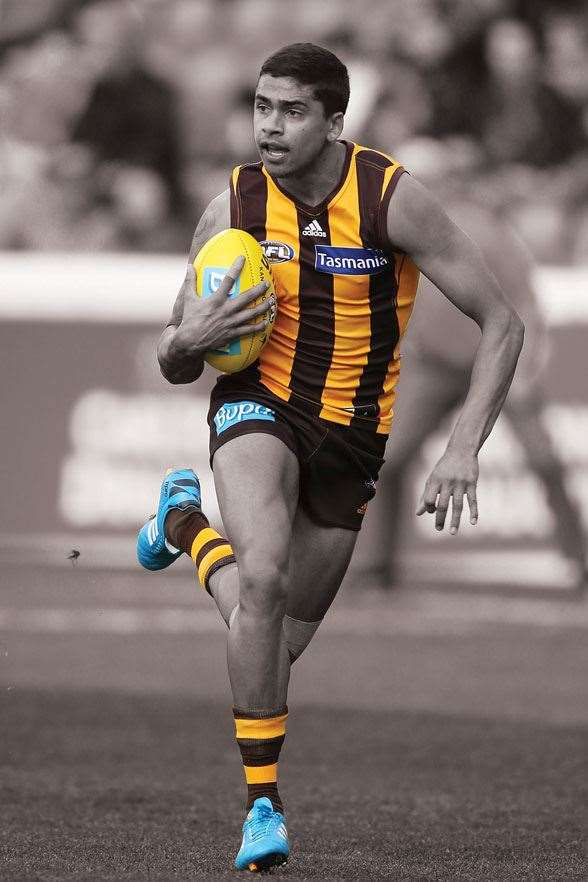

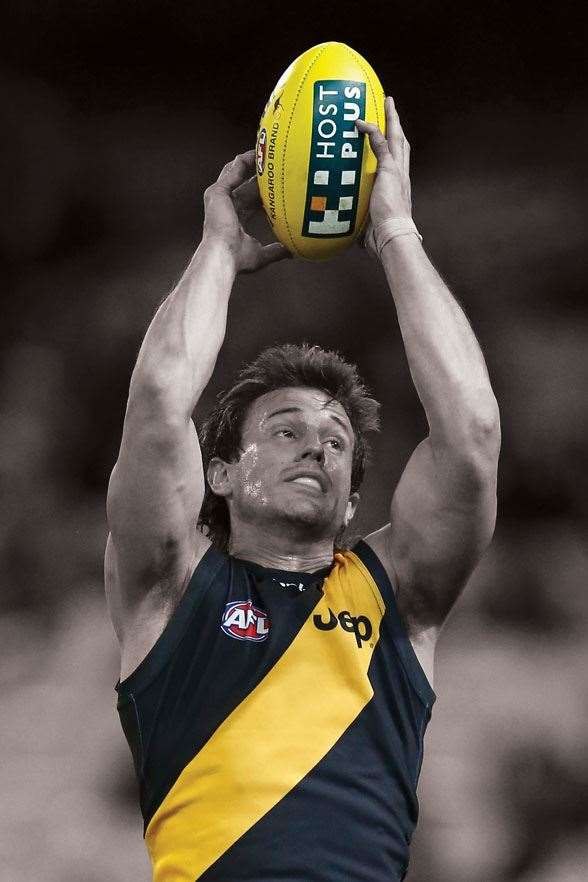
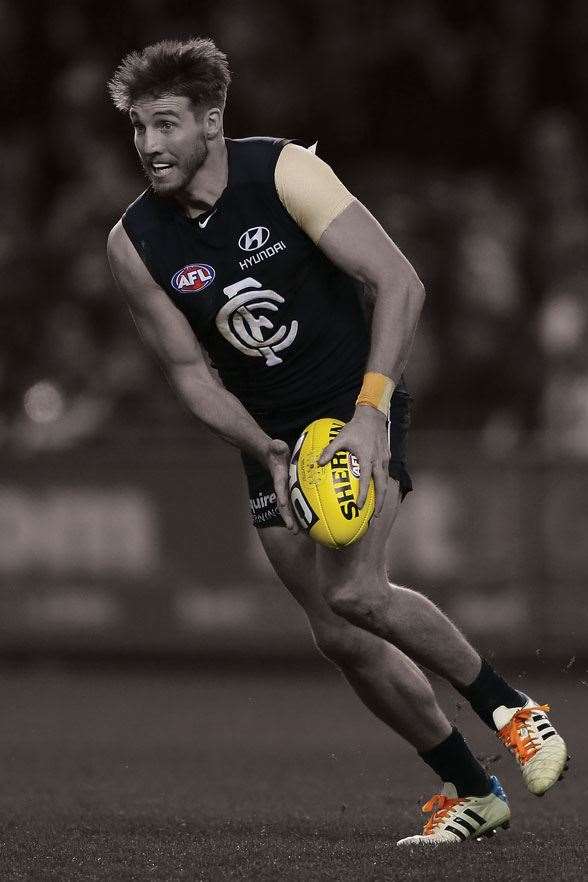
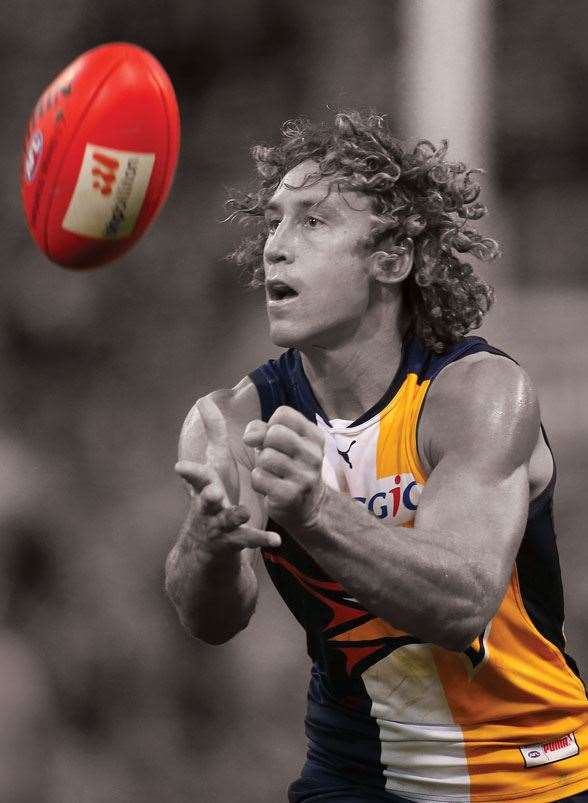
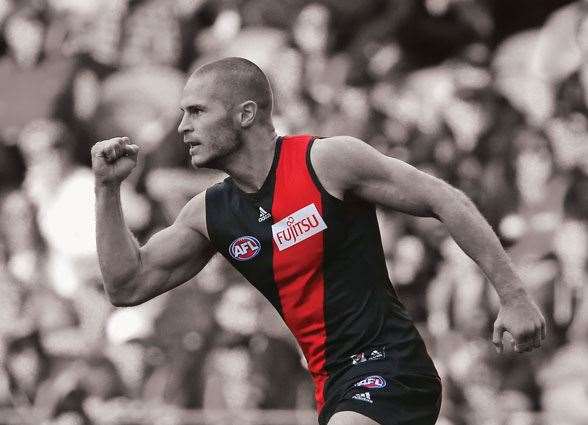
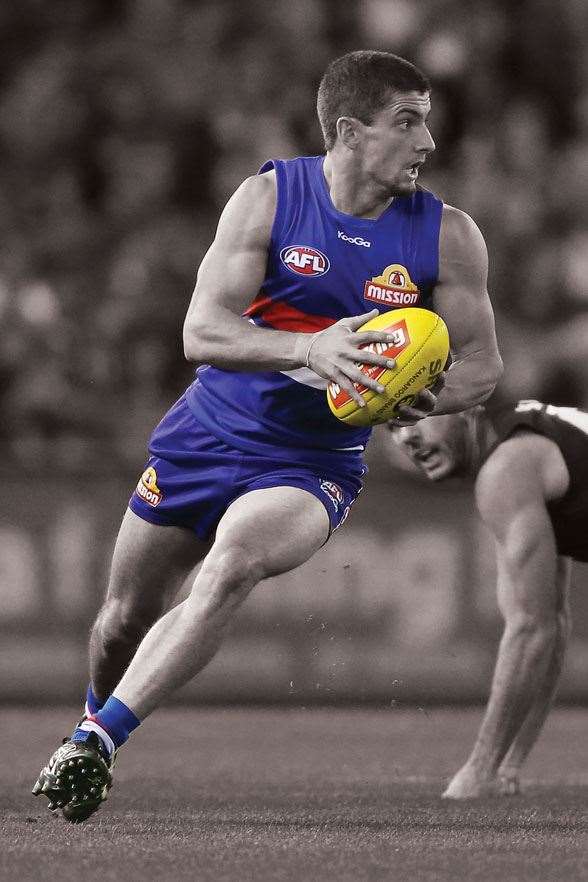

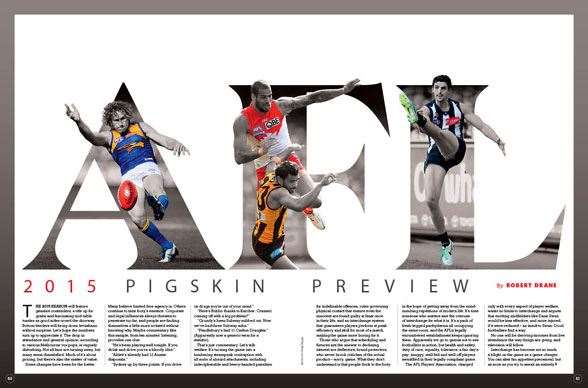




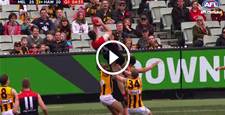
.jpg&h=115&w=225&c=1&s=1)
